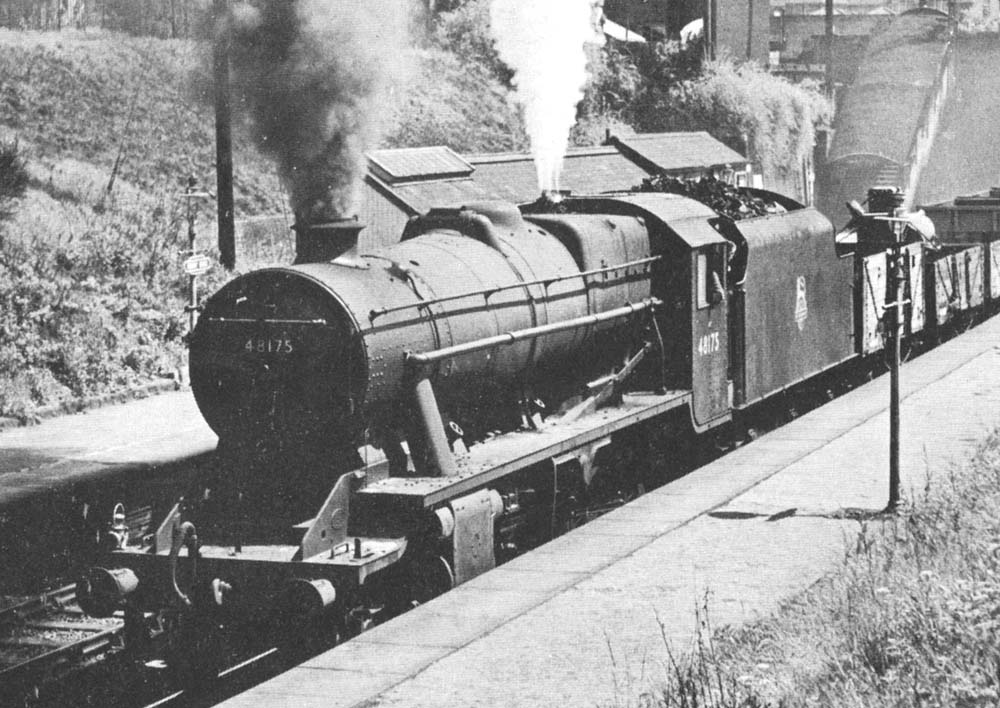 |
|
London North Western
Railway:

Midland
Railway:

Stratford
Midland Junction Railway
|

|
LMS Route: Birmingham-Soho-Perry Barr-Birmingham
Perry Barr Station: lnwrpb1512a
 |
Close up of image 'lnwrpb1512' showing ex-LMS 8F 2-8-0 No
48175, the last of the second batch built by Crewe works, working hard. Behind
the locomotive, the top of the structures on the up platform can be seen. It is
thought that the left hand portion was the gentlemen's urinal - the raised
section provided ventilation - the middle section provided the waiting rooms
whilst the right hand portion, with the higher roof, was the booking office.
Designed for hauling heavy freight some 852 of Stanier's freight locomotives
were built between 1935 and 1946 because the War Department initially adopted
the design for their needs. In many ways they can be considered a freight
version of William Stanier's successful mixed traffic 4-6-0, the ubiquitous
Black Five class. They were introduced because LMS freight traction had
suffered from the adoption of the Midland Railway's small engine policy which
had left it with trains double-headed by underpowered 4F 0-6-0s, supplemented
by inadequate 2-8-0+0-8-2 Garratts and Fowler's 7F 0-8-0s. They were initially
classified 7F, but this was later changed to the more familiar 8F.
The War Department placed an order for fifty locomotives
with Beyer Peacock and one hundred and fifty-eight locomotives with the North
British Locomotive Company as well as requisitioning another fifty-one from the
LMS. Production of Stanier's 8F continued until 1943, when the cheaper War
Department Austerity 2-8-0 design was introduced. Many Stanier 8Fs saw
service outside the UK in Egypt, Palestine, Iran, Iraq, Italy and Turkey.
Twenty-four 8Fs entered Palestine Railways stock; twenty-three of which were
taken over by Israel Railways in 1948. The Israeli War of Independence stranded
one 8F, No 70372, (NBL works no. 24680) on a small section of the main line
near Tulkarm on the West Bank side of the 1949 Armistice line. It remained
there, increasingly derelict, until after the 1967 Israeli invasion of the West
Bank, until Israelis finally removed and scrapped it in about 1973. During the
war the London and North Eastern Railway built sixty-eight Stanier 8Fs for
their own use, classifying them as O6. Thirty-nine returned from overseas
service to Britain at the end of the War. At nationalisation in 1948, 663 8Fs
entered British Railways stock, with three further examples, No 48773 to No
48775, (previously AD500-2) being purchased from the Longmoor Military Railway
in 1957, bringing the total to 666.
 back back

|
